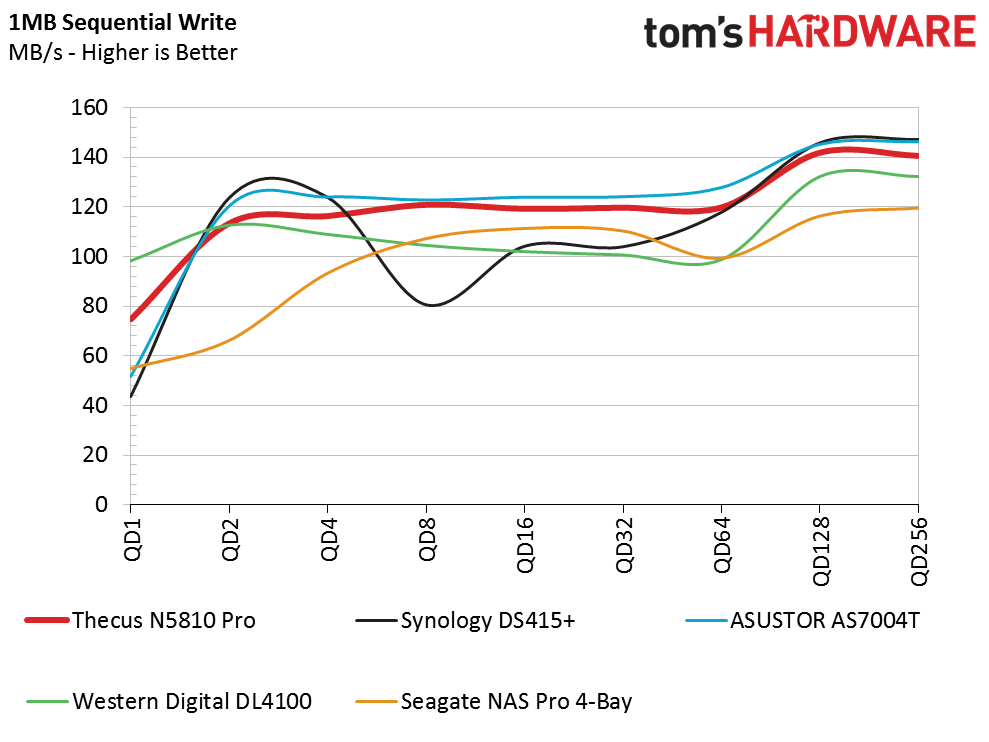Thecus N5810 Pro NAS Review
Thecus' N5810 Pro is the only NAS in its price class with a built-in battery backup that allows the system to save your data even after the power goes out.
Why you can trust Tom's Hardware
Sequential Performance


Now we're testing sequential performance in two blocks sizes and with increasing queue depths. The NIC in the local system is an Intel 40GbE Fortville chipset that tends to exhibit better performance at high queue depths due to its built-in buffers.
Most of the NAS products deliver full gigabit Ethernet performance at a queue depth of two, but that shouldn't come as a surprise since all of these devices deliver high throughput in basic four-corner tasks.


We're starting to get away from the buffers and cache manipulating write performance, at least until we hit the higher queue depths. The N5810 Pro delivers steady sequential write performance through the queue depth range.
Get Tom's Hardware's best news and in-depth reviews, straight to your inbox.
Current page: Sequential Performance
Prev Page Random Data Transfer by Size Next Page Random Performance
Chris Ramseyer was a senior contributing editor for Tom's Hardware. He tested and reviewed consumer storage.
-
Lulzon Typically battery backups are SLA (sealed lead acid) which is most likely why they don't get packaged with NAS systems - they're heavy, they're a dangerous good by transportation and shipping rules, they expand and can release gasses when under load and charged. The upside? They have way more capacity than that of a lithium-ion as shown in this little unit, they (probably) cost much less, and they last longer (5+ years vs 2-3). In terms of a NAS though, the capacity isn't really an issue if the only thing the NAS is doing is shutting down to avoid data loss/corruption.Reply -
Aris_Mp 55.3W under heavy throughput and 35.1W at idle with 5x Seagate ST500DM005 HDDs and RAID 6 configuration.Reply -
TontNZ I'm not sure if I've just missed it - but: How many drives of what brand and capacity, in what raid mode were used for the testing?Reply
It would be good to single this information out into one of the section headings. It may be redundant as you presumably standardise this across NAS of a given bay capacity - but it would still be useful. -
This is an impressive device. I'd definitively give it a try for home office solutions. The only downside I can see to it is that if the internal memory were to die (flash, ram), the backups are probably gone unless they keep using the same system/setting organization and it is forward compatible with other similar systems.Reply
5 years is a long time and unless they intend to have the same product line around for a long time, it will either be EOL or replaced with an updated version.